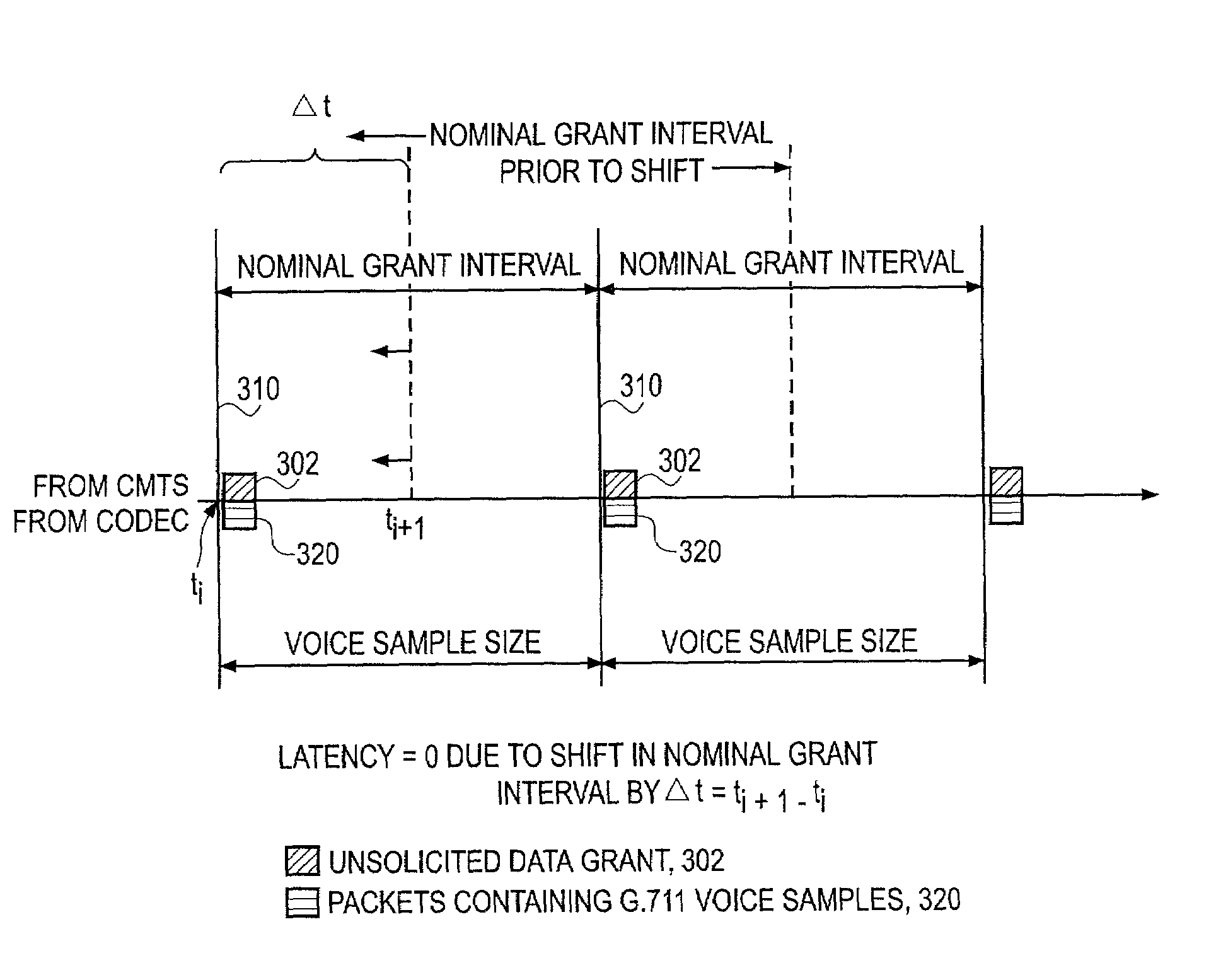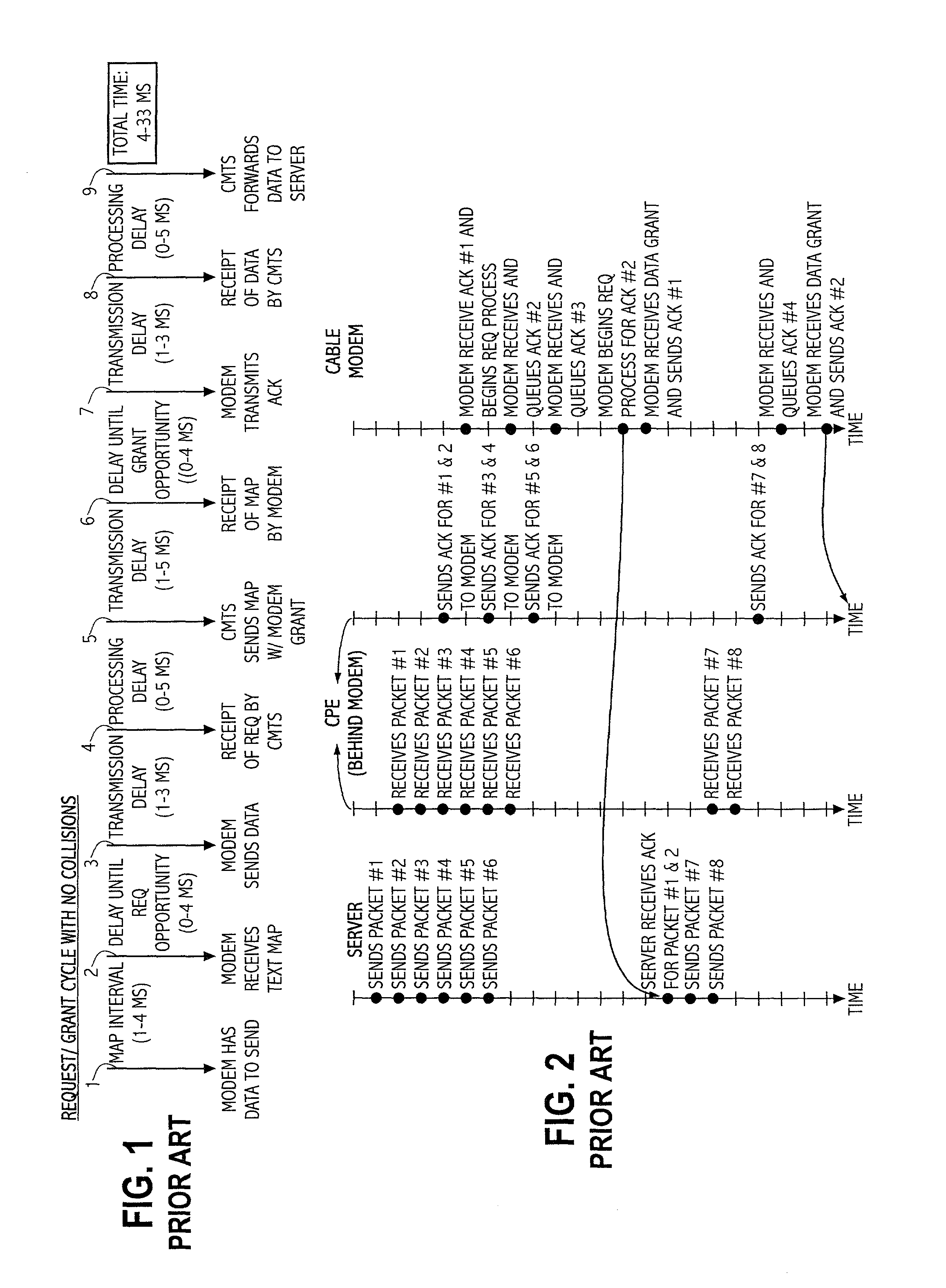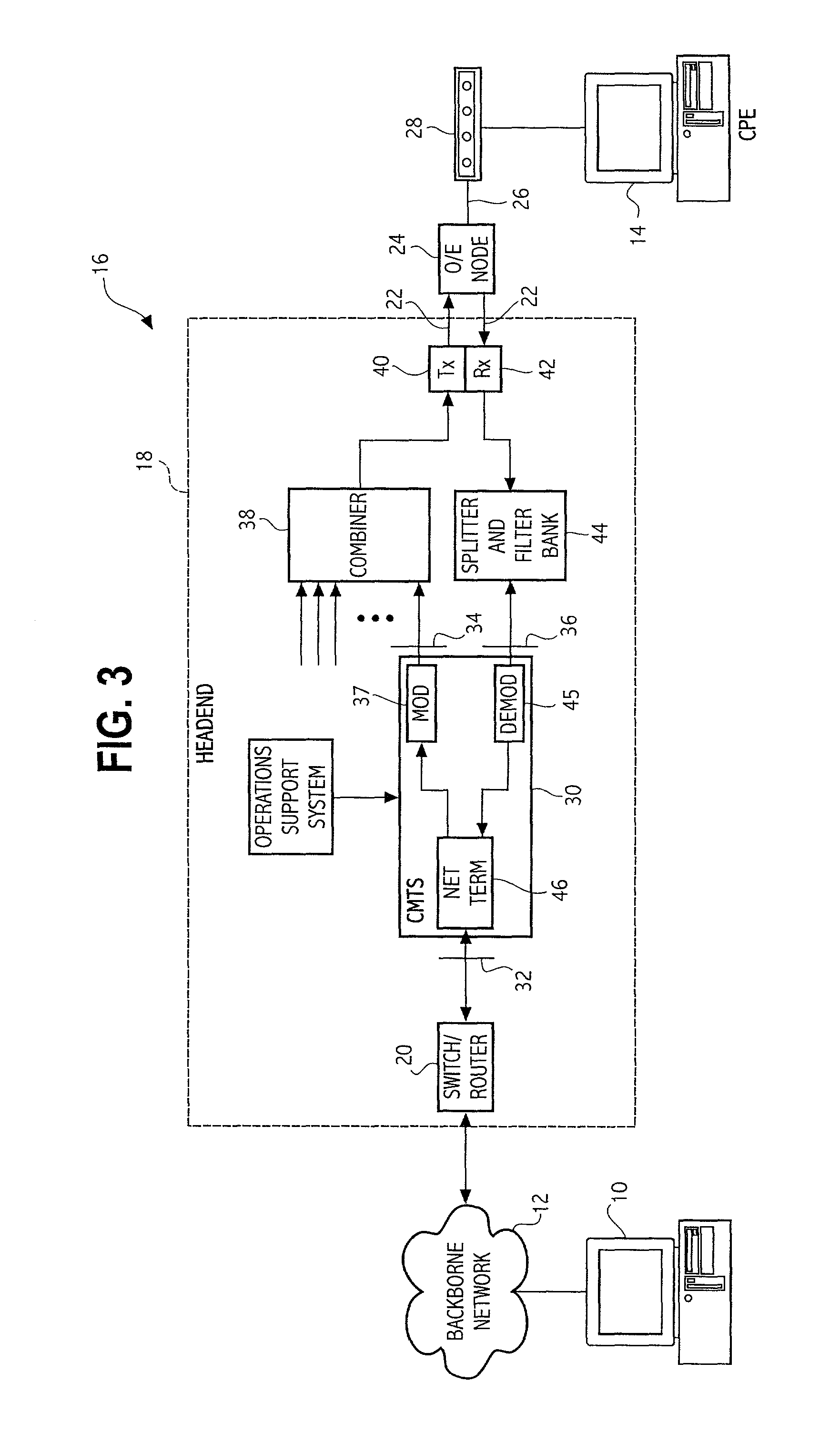Communication of packet arrival times to cable modem termination system and uses thereof
a technology of cable modem termination and packet arrival time, which is applied in the direction of data switching by path configuration, electrical equipment, and broadband local area networks, etc., can solve the problems of reducing latency, affecting the service life of the cable network, and being unable to meet the needs of a large number of subscribers, so as to reduce latency
- Summary
- Abstract
- Description
- Claims
- Application Information
AI Technical Summary
Benefits of technology
Problems solved by technology
Method used
Image
Examples
example
[0139]As noted above, TCP ACK messages in TCP clients are typically transmitted with the “delayed acknowledgment” algorithm, as suggested in RFC 1122. When this algorithm is running in a client, a number of the TCP ACK messages generated by that client are generated precisely because of the firing of the TCP ACK timer. As set forth above, a CMTS can attempting to deliver an unsolicited grant to the cable modem very shortly after the arrival of these timer-derived TCP ACKs. In order to do this, the CMTS needs to know when the timer ACKs arrive at the cable modem, as well as how long it takes to deliver the MAP containing the grant to the cable modem in the downstream direction.
[0140]For a simple, example method, the CMTS and the cable modem implement an extended header feature for the DOCSIS MAC packet header. FIG. 8 shows an unencrypted DOCSIS packet structure; FIG. 9 shows the packet with the extended header 200. The extended header feature is a way for the cable modem to mark ever...
PUM
 Login to View More
Login to View More Abstract
Description
Claims
Application Information
 Login to View More
Login to View More - R&D
- Intellectual Property
- Life Sciences
- Materials
- Tech Scout
- Unparalleled Data Quality
- Higher Quality Content
- 60% Fewer Hallucinations
Browse by: Latest US Patents, China's latest patents, Technical Efficacy Thesaurus, Application Domain, Technology Topic, Popular Technical Reports.
© 2025 PatSnap. All rights reserved.Legal|Privacy policy|Modern Slavery Act Transparency Statement|Sitemap|About US| Contact US: help@patsnap.com



